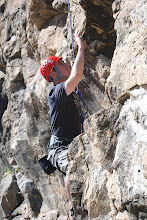
I was a bit surprised to learn that after a small piece of you gets buried on a foreign continent, some people see it fit to tell you you're not allowed to drive a vehicle. This is of course due to the fact that a small piece of your brain, the piece that effects your ability to drive, is commonly believed to be located in the extremities, not the head as one might imagine.
This didn't sit well with me so one of the first things I did on getting out of the hospital was to go get medically certified to drive again. My license was invalid the moment the doctors fired up the power saw so I needed their permission to get behind the wheel again.
Most amputees get their licenses back, however, it usually comes back with one or all of the following restrictions:
a) vehicle must have an automatic transmission
b) if manual transmission is required, vehicle must be modified
c) no more riding motorbikes
In Queensland, a manual transmission license must be earned by doing a roadtest so an "automatic only" or "CA" restriction on your license can be very difficult to remove. To earn your unrestricted motorcycle license or "R" rating you must complete a written exam, a practical course and a roadtest. Again, earning this back would be tricky.
On first pass, the doctor filled in my paperwork suggesting both (a) and (c) above. Maybe that's reasonable... and maybe if I squeeze hard enough, diamonds will drop out of my butt. To me, this wasn't a negotiation. When someone tells me I can't do something, I get motivated.
Knowing this might happen, I had taken a bit of time to prepare before hand and brought two copies of the form. I was friendly, but firm. My arguments were as follows:
(a) and (b) automatic car or modified car:
The new
Porsche 911 has a clutchless gear changing system called a
sequential paddle shifter on the steering wheel. So does the new
SmartCar. These transmissions are considered manual. They also come standard, thus, they are not considered to be a "modification" of any sort.
Score: Mike +2, "the Man" 0
(c. No motorbikes, this could be a tough sale):
Revloc makes automatic transmissions that can be fitted to any motorcycle. This eliminates the need for a left foot when changing gears. There are also 1200cc road scooters with automatic transmissions standard but you must have a motorcycle license to ride one.
There's no "automatic only rating" for motorcycle licenses. I can't help that, but I shouldn't be restricted by it either. If that
had been the argument:

Yamaha (my bike was a Yamaha *sigh*) introduced a semi-automatic transmission on its 2007 sport-touring bike (
FJR1300). This can be shifted with a switch on the left handlebar where the clutch lever would go on a regular motorcycle rather than using a foot peddle. Harley Davidson also had a handlebar mounted manual bike shifter, which is similar to a mountain bike shifter, unfortunately named the "
suicide shifter". Neither model requires a functional left foot to operate the bike.
Score: Mike +3, "the Man" 0
So there you have it. As you can see by the photo, my license now bears the letter "M" on it, validating the fact that I have a medical condition. It also bears the C (unrestricted car) and the R (unrestricted motorcycle) licenses. All legal.
Don't worry, I'm not going to hop onto a motorcycle anytime soon in my current state and I do own an automatic car. It wasn't about that.
I'm told I'll only be limited by my own imagination and I believe that. In this case, a little imagination went a long way. The next time someone tells you that you "can't" do something, maybe you'll remember the grinning face in that photo on my new license.
 This is seriously cool! Imagine having a prosthetic arm and still being able to feel sensations through it like heat or textures. It's one of those cases where the truth is stranger than the fiction, and the truth absolutely blows my mind.
This is seriously cool! Imagine having a prosthetic arm and still being able to feel sensations through it like heat or textures. It's one of those cases where the truth is stranger than the fiction, and the truth absolutely blows my mind.  Around Christmas time, I received an amazing gift in the mail that I'll always treasure. It's a little piece of home. It's a Canadian icon. It's got a funny name. It's a Canadian Loonie!
Around Christmas time, I received an amazing gift in the mail that I'll always treasure. It's a little piece of home. It's a Canadian icon. It's got a funny name. It's a Canadian Loonie!





















.jpg)
.jpg)
.jpg)
.jpg)
.jpg)


.jpg)
